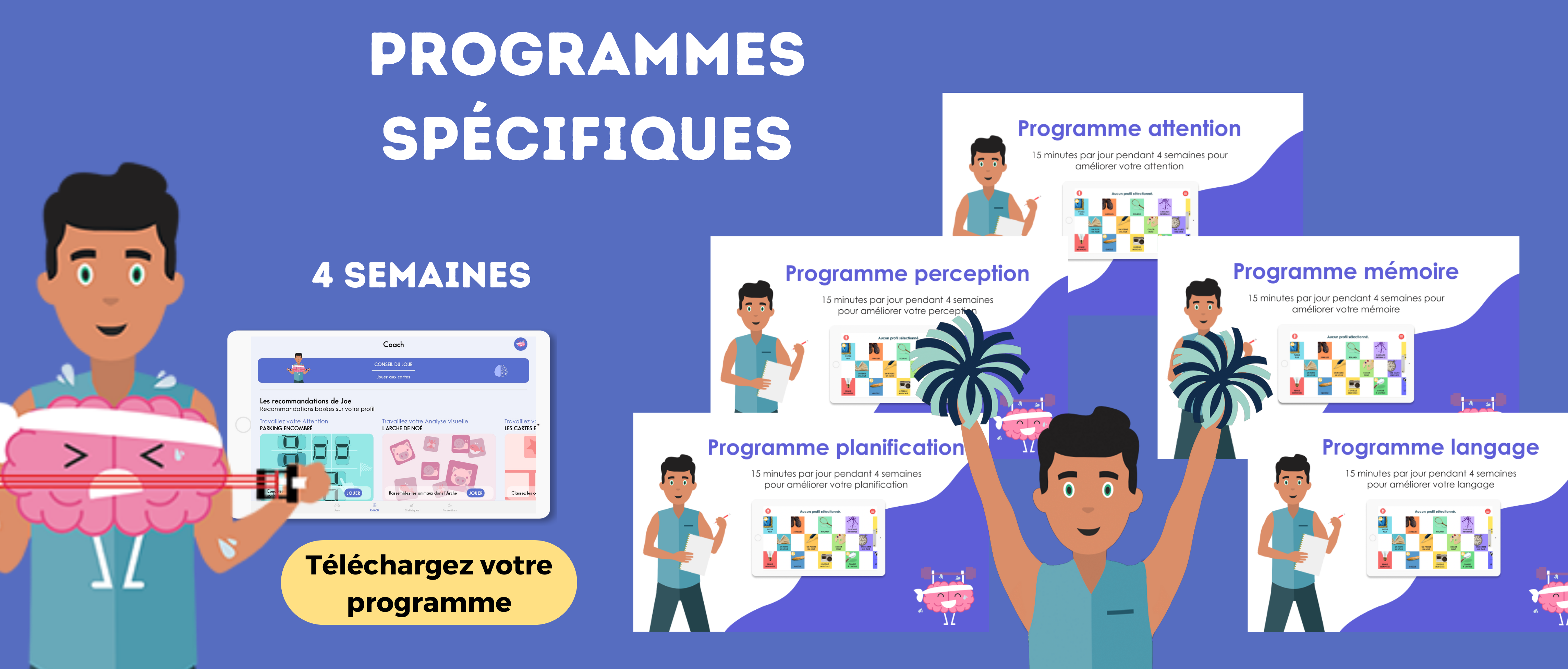Work
its SEMANTICMEMORY
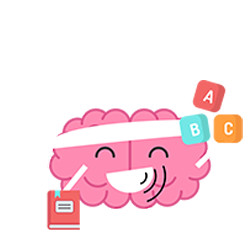

Preserving semantic memory
Reinforce the ability to recall facts, concepts and general knowledge

Strengthen your ability to associate concepts
Ability to associate words and ideas with each other

Applications in everyday life
Working on your attention with our games helps you retain facts in a more lasting way for everyday life.

Semantic memory concerns knowledge of the world and language. Thanks to semantic memory, we can remember, for example, how many days there are in the week, and what they are.
Semantic memory is involved in memorizing our knowledge of the world, our “mental encyclopedia”.
What is semantic memory?
Semantic memory stores words, ideas and concepts. Semantic memory is a long-term memory, so once we’ve acquired knowledge, it can be retained for a long time.
This memory governs our relationship with the environment, as it stores the names of objects, their functions, characteristics and uses, the names of abstract concepts and general knowledge.
Our brains can process information stored in semantic memory. This enables us to make associations between our knowledge and understand the world, or to think in more complex terms.
Semantic memory disorders
Following an incident, trauma or illness, semantic memory can be impaired. This can make it difficult to learn new concepts or find the right words.
- Semantic dementia: in this case, there is a difficulty in understanding the meaning of a concept, in finding its significance. However, it is fluid when it comes to following a pattern (if I have eyesight problems, I go to the optician).
- Damage to the prefrontal cortex: in this case, the person is able to understand all the words he or she hears, and gives them the right meaning. But they are unable to make connections between concepts and create or follow patterns.
- Alzheimer’s disease: one of the first symptoms of Alzheimer’s disease is forgetting words. Semantic memory is thus affected in this disease, and this can be one of the first symptoms leading to early diagnosis. Recognizing the symptoms of this disease early on can help to provide better support for Alzheimer’s sufferers during the course of the disease.
Exercises to train and improve semantic memory
Semantic memory is a cognitive function that we can improve throughout our lives. We can train it as a preventive measure, but also to recover skills lost through illness.
Learning new languages or traveling can help to discover new words, and make associations that keep the brain active.
Reading books can also be useful for learning new words, or for remembering those you already know. Reading newspapers is also highly recommended for training semantic memory. With newspapers, you can make associations between new information and information from days gone by.
Our games for working semantic memory
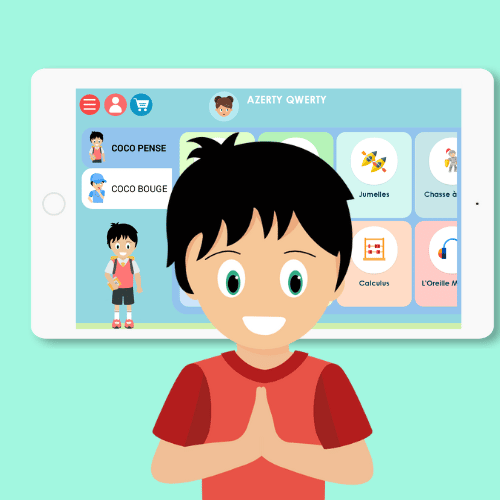
COCO THINKS and COCO MOVES
- Le poème perdu
- Hunting Intruders
- Quizzle
- Musical ear
- Brainstorming
- Coco Cuisine
- A Card A Date
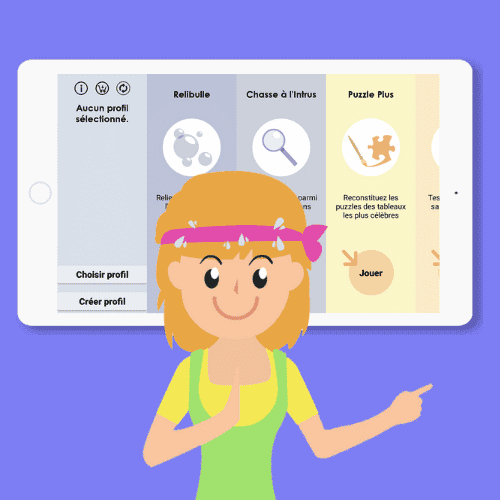
SCARLETT
- Le poème perdu
- Mamie Cuisine
- Around the world
- One card, one date
- Hunting Intruders
- Quizzle
- Musical ear
- Brainstorming
- Un texte un jour / A poem for a day
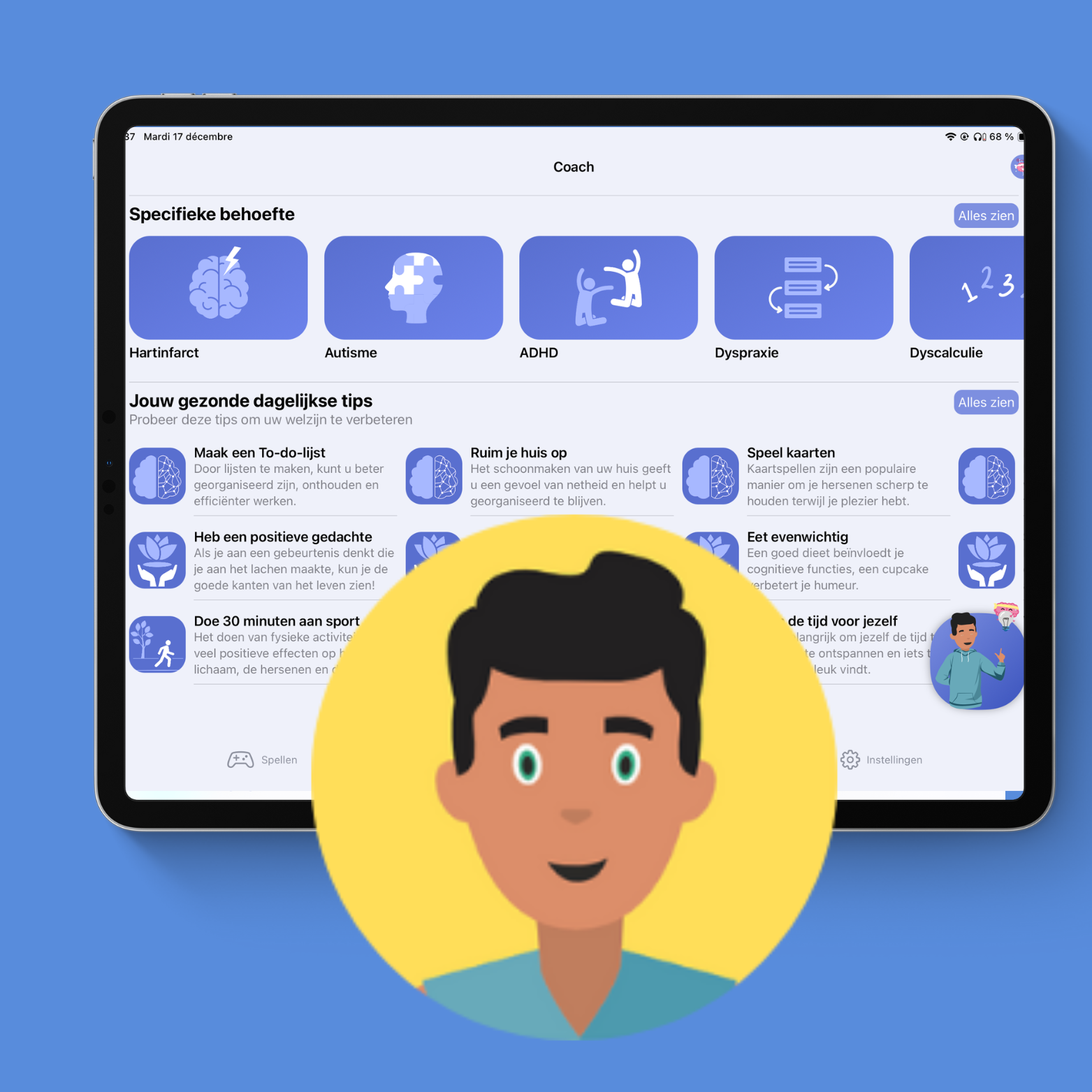
CLINT
- Le poème perdu
- Mamie Cuisine
- Around the world
- One card, one date
- Hunting Intruders
- Quizzle
- Musical ear
- Brainstorming
- Un texte un jour / A poem for a day
Want to improve your attention span?
Our games have the following 3 impacts:
-
Stimulate attention every day: Our games are designed to train attention in a progressive, targeted way. For example, the “Perce Ballons” game requires constant concentration to spot and aim only at balloons of the requested color. This reinforces the ability to focus on specific tasks while eliminating distractions.
-
Distraction management: Games also promote distraction management by simulating environments where the user has to concentrate despite disruptive elements, as in “Hunting Intruders”, where you have to spot a word that doesn’t match the others among several proposals.
-
Applications in everyday life: Attention training with our games has a direct impact on the management of everyday tasks. For example, attention training can improve the ability to follow a complex conversation or complete household chores while remaining focused.
Discover our attention training programs with our coaches!
Semantic memory is the cognitive function that enables us to record all information related to the environment.
This information is stored in categories. Our brains also create connections between information. Here’s how we use semantic memory in everyday life.
1. Memorizing knowledge
Semantic memory enables us to learn and memorize general knowledge related to the environment, other people, or abstract concepts.
Semantic memory is the key to general knowledge. This function is very important for learning at school, but also in the working environment.
Quizzle
In this game, you have to answer general knowledge questions.
With this game, the player stimulates the search for knowledge. This involves not only understanding words, but also following a pattern to find the right answer. If you don’t know the right answer, you can also use semantic memory to rule out wrong answers and find the right one, thanks to the logic of exclusion.
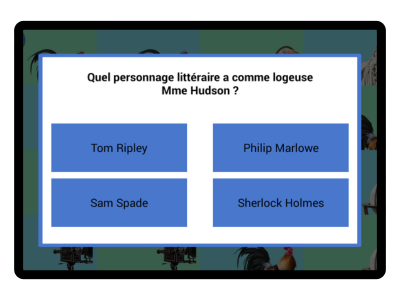
2. Vocabulary memorization
Semantic memory enables us to name and give meaning to objects, people and abstract concepts. This allows us to expand our vocabulary and create more complex sentences. Language is essential for communicating with others. The more words we know, the easier it will be to understand others and make ourselves understood.
Brainstorming
In this game, the person must put the words in order to create sentences. So we need to understand the words we already have in our vocabulary, but we can also learn new ones. Word order is important, because a sentence makes sense when it’s well structured and coherent. What’s more, the sentences in this game are proverbs, so we can also work on our knowledge of them.

3. Creating abstract concepts
In our memory, information is stored in categories, but our brain can create connections between information. This enables us to use all the information at our disposal to find the best solution. This function is also based on our experience, so we can create concepts according to the experiences we’ve had.
Hunting Intruders
In this game, you have to read 4 words and find the intruder between them.
With this activity, you can stimulate semantic memory, as you have to understand the words and find their meaning. What’s more, to find the intruder, you have to find an association between 3 of the words presented and find the category to which they belong. This game is a great way of simultaneously working out the meaning of a concept and creating mental schemas. The categories to be found are often abstract concepts.
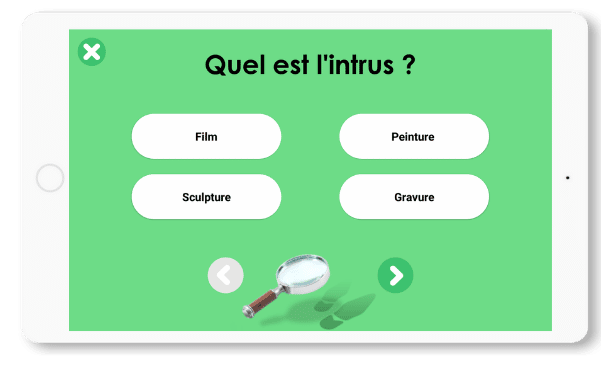
4. Interpreting gestures and symbols
Language and general knowledge come not only through spoken language, but also through writing (symbols) and body language (gestures). So we need to be able to recognize these gestures and symbols too, if we are to understand everything around us. Indeed, gestures and symbols are important not only for communicating with others, but also for understanding the context in which we find ourselves.
Lost poem
In this game, you read a poem and then recall the missing words.
Here, we’re working on reading, and therefore on understanding words (which are symbols).
What’s more, once we’ve read the poem, we have to find the missing words, so we also have to work on vocabulary and word meanings.
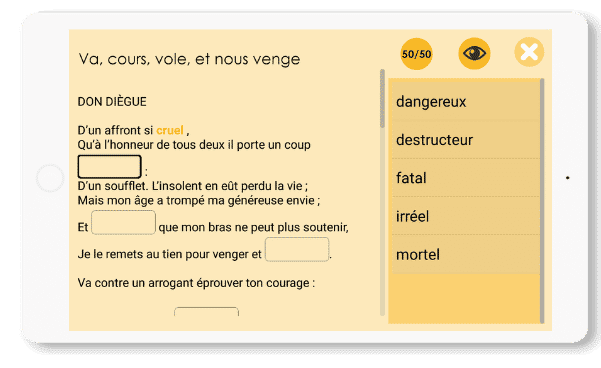
Do you want to improve your semantic memory?
Our games have the following 3 impacts:
-
Stimulate semantic memory on a daily basis: Our games are designed to strengthen long-term memory by associating facts and concepts. For example, the game “The Lost Poem” helps you memorize words and organize ideas to reinforce comprehension and recall of complex information.
-
Reinforce the ability to associate concepts: Games encourage the creation of links between different concepts, as in “Quizzle”, where you have to answer general knowledge questions. This improves the ability to connect ideas and memorize information in a more lasting way.
-
Applications in everyday life: Working on your semantic memory with our games makes it easier to store and retrieve complex information in everyday life. It helps you remember important facts, concepts and details in conversations, reading or work tasks.
Discover our attention training programs with our coaches!

COCO THINKS and COCO MOVES

SCARLETT

CLINT
Follow a training program for 4 weeks
ATTENTION PROGRAM
For 4 weeks, follow our program to work on attention by playing our specially selected games for 15 minutes a day.
MEMORY PROGRAM
For 4 weeks, follow our program to work the memory by playing our specially selected games for 15 minutes a day.
LANGUAGE PROGRAM
For 4 weeks, follow our program to work on language by playing our specially selected games for 15 minutes a day.
PLANNING PROGRAM
For 4 weeks, follow our program to work on your planning by playing our specially selected games for 15 minutes a day.
PERCEPTION PROGRAM
During 4 weeks follow our program to work on perception by playing our specially selected games for 15 minutes a day.
Complementary exercises at home to work on your semantic memory
Practice word association
-
Associate words by category: Take a word (e.g. “dog”) and list other words that are related to that category (e.g. “animal”, “mammal”, “paws”). This helps you strengthen your semantic connections and better organize information.
-
Associating words with definitions: Give a word to memorize and write down its definition. Review this list regularly to help you remember the meanings of words and concepts.
Using revision sheets
-
-
Create cards with key concepts: Write down important information (e.g. historical dates, scientific facts) on cards and test yourself regularly to reinforce your semantic memory.
-
Use mind maps: Create mind maps by linking concepts together (e.g. parts of a plant, stages of photosynthesis). This allows you to visualize semantic connections between different elements.
-
Playing word games
-
-
Synonym and antonym games: Practice finding synonyms or antonyms for a series of words. This stimulates semantic memory by reinforcing associations between different concepts.
-
Theme-based crosswords: Make crosswords based on a specific theme (e.g. biology or history) to associate concepts and facts with keywords.
-
Reading and analyzing texts
-
Read articles on a variety of subjects: Read articles on different subjects (science, history, etc.) and try to retain the essential information. This helps strengthen semantic memory, making it easier to organize and retain facts.
- Write summaries: After reading a text, write a summary, focusing on key concepts and main ideas. This helps to organize information and memorize it more effectively.
Stimulating active learning
-
-
-
Explain a concept to someone else: Take a concept you’ve learned (for example, a scientific theory) and explain it to another person. Teaching reinforces semantic connections and improves retention.
-
Do further research: After learning a concept, do further research to deepen your understanding. This reinforces associations and broadens your knowledge.
-
-
Improving reading comprehension
-
-
Read books and ask questions: Read a book or article and write down questions about what you’ve read. Try to answer these questions without looking at the text. This helps you activate your semantic memory to retrieve essential information.
-
Rephrase ideas: After reading a passage, rephrase it in your own words to make sure you understand and retain the key concepts.
-
Make connections between new information and existing knowledge
-
-
Associate new information with prior knowledge: When learning a new concept, make links with information you already know. This reinforces retention and facilitates the integration of new knowledge into your semantic memory.
-
Linking ideas to personal experiences: Associate information with personal events or experiences. For example, linking a historical fact to a situation or image you can visualize makes the information more memorable.
-
Organize information into categories
-
-
-
-
Classify information by theme: Take a set of facts or concepts and classify them into different categories (e.g. different types of plant). This helps you organize your knowledge and recall it more easily.
-
Make connections between categories: Link different categories of information to understand how they interact with each other, thus promoting semantic memory and knowledge integration.
-
-
-
Participate in intellectual discussions
-
-
-
Join book clubs: Discuss books or articles with others to exchange ideas, reinforce your knowledge and better understand concepts. This stimulates semantic memory, calling on your thinking and association skills.
-
Discuss complex concepts: Take part in discussions or debates on topics that force you to explain and defend complex concepts. This strengthens your ability to organize and express knowledge clearly.
-
-



